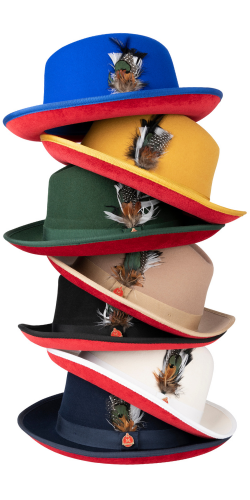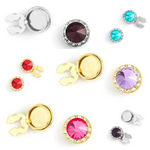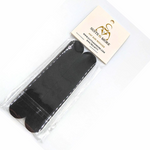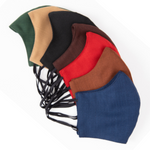Hey there, stylish readers! Ever wondered why some guys always seem to have crisp, perfect ties while yours might look a tad tired? Well, the secret's out: it's all about how you take care of your ties. Keeping your neckties in great shape isn't just about looking good (though that's a big part). It’s about making those ties last longer and saving money in the long run.
Understanding Different Necktie Materials
Before you toss your tie in the wash or stuff it in a drawer, let’s talk materials. Ties come in a variety of fabrics, and each one needs a little different TLC to stay in top form.
- Silk: This classic tie material is a bit high maintenance but worth it for its smooth finish and sharp look. Silk ties need to be cleaned gently and never wrung out or they’ll lose their shape.
- Polyester: Tougher than silk and easier to care for, polyester ties can handle more water and heat, making them less of a fuss. They’re a good choice if you’re always on the go.
- Wool: Wool ties are great for colder months and are pretty sturdy. They do best with spot cleaning and a bit of steam to keep them looking fresh.
Each type of material has its own personality and needs. Knowing what your tie is made of is the first step to keeping it looking great for every event on your calendar.
Daily Care Tips
Taking good care of your necktie starts the moment you put it on. Here’s how to keep it looking its best every day.
Proper Wearing
Tying and untying your tie might seem simple, but doing it the right way can make a big difference. Always tie your knot carefully without pulling too tight—this keeps your tie from stretching or getting permanent creases. When you’re done for the day, don’t just yank it off. Carefully reverse the steps you took to tie it, and hang it up or roll it softly.
Stain Prevention and Immediate Response
Life happens, and sometimes it happens to your tie. Here’s how to keep it clean:
- Prevent Stains: Avoid messy foods when wearing your tie, or tuck it into your shirt while eating.
- Immediate Response: If a spill does happen, blot—don’t rub—the stain gently with a clean, damp cloth. For oil stains, a little talc or cornstarch can help absorb the grease.
Cleaning Your Neckties
Even with careful wear, your ties will need a proper clean now and then.
Spot Cleaning Techniques
Got a spot? Here’s how to handle it at home:
- Lay the tie flat and place a clean cloth under the stained area.
- Dip another cloth in a mild cleaning solution (water with a tiny bit of dish soap works).
- Dab the stain gently. Don’t scrub or the fabric might get damaged.
- Rinse the area by dabbing with a cloth dipped in clean water.
- Lay flat to dry, away from direct heat or sunlight.
Washing Neckties
Sometimes, spot cleaning isn’t enough. Here’s how to hand wash your tie when it needs a deeper clean:
- Fill a basin with cool water and a gentle detergent.
- Submerge the tie, gently swishing it around. Don’t wring or twist—it can ruin the shape.
- Rinse thoroughly in cold water until all soap is removed.
- Lay the tie flat on a clean towel, roll up the towel to press out excess water, then unroll and lay flat to dry.
Professional Cleaning
For silk ties or when you’re not sure how to handle a stain, professional cleaning is your best bet. Look for a cleaner who specializes in delicate fabrics. They’ll have the right tools and know-how to get your tie looking like new without damaging it.
Following these tips will help keep your ties looking impeccable for every occasion. Whether you’re dressing up for a big meeting or a night out, your necktie can make a powerful statement—make sure it’s saying what you want it to!
Storing Neckties
Once your tie is clean and dry, storing it correctly is key to keeping it in shape for the long haul. Here’s how to do it right.
Hanging vs. Rolling
Hanging:
-
Pros: Keeps ties straight and ready to wear; good for displaying your collection.
-
Cons: Can stretch the fabric over time if not hung properly or if the tie is made from a delicate material.
Rolling:
- Pros: Preserves the shape and fabric of the tie, especially for silk and other delicate materials.
- Cons: Not as convenient if you need to grab a tie quickly; requires more space if you have a large collection.
Best Practices for Storage
Choosing the right storage can make a big difference:
- Use a proper tie rack or a hanger designed for ties. This helps avoid wrinkles and damage.
- If rolling, use a drawer with dividers or a storage box to keep ties separated and organized.
- Keep ties out of direct sunlight to prevent colors from fading.
- Maintain a cool, dry place for storage to avoid humidity that can damage the fabrics.
Ironing and Pressing Neckties
Sometimes a tie gets a wrinkle that hanging won’t fix. Here’s how to iron or press your tie safely:
- Set the iron to the lowest heat suitable for the fabric type. Silk and polyester require low heat to avoid damage.
- Place a thin cloth over the tie while ironing. This prevents direct contact with the iron, which can cause shiny spots or burning.
- Iron the backside of the tie only. This helps protect the visible part of the tie from getting damaged.
- Don’t press down too hard. Use light pressure and let the heat do the work to remove wrinkles.
- Consider using a steamer. Steam can gently remove wrinkles without direct contact. Hold the steamer a few inches away from the fabric and move it back and forth.
Repairing Damaged Neckties
Even the best-cared-for ties can get damaged sometimes. Here’s what to do:
- Minor Snags and Loose Threads: Carefully cut the loose thread with scissors, or use a needle to tuck it back inside the fabric. Avoid pulling snags.
- Small Tears or Holes: For tiny tears, a fabric adhesive designed for the material can work. Apply it carefully according to instructions to avoid staining.
- Professional Repairs: If the damage is more significant or you’re unsure how to fix it, take your tie to a professional tailor or a specialty cleaner who can repair it properly without causing further damage.
Extending the Life of Your Neckties
Keeping your ties in prime condition is all about good habits from the start:
- Daily Wear: Rotate your ties to avoid wearing the same one too often, which helps reduce wear and tear.
- Storage: Always untie your neckties after wearing and store them properly—either rolled or hung.
- Cleaning: Address stains immediately and only clean your ties as needed to prevent fabric stress.
- Ironing: Use low heat and a pressing cloth to avoid direct contact with the iron.
Quick Tips:
- Keep your ties out of direct sunlight when storing to prevent color fading.
- If your tie gets wet, hang it up to air dry naturally away from heat sources.
- Use a mild wrinkle releaser spray for quick touch-ups without ironing.
Final Thoughts
Taking great care of your neckties isn’t just about looking good; it’s about making those investments last. By following these simple care, storage, and repair tips, you’ll ensure your ties remain a vibrant and vital part of your wardrobe for years to come.
We invite you to put these practices to good use and explore our extensive necktie collection at Suits & More. Find the perfect ties to express your style and add a touch of class to any outfit. Start making every tie a statement piece that lasts!











